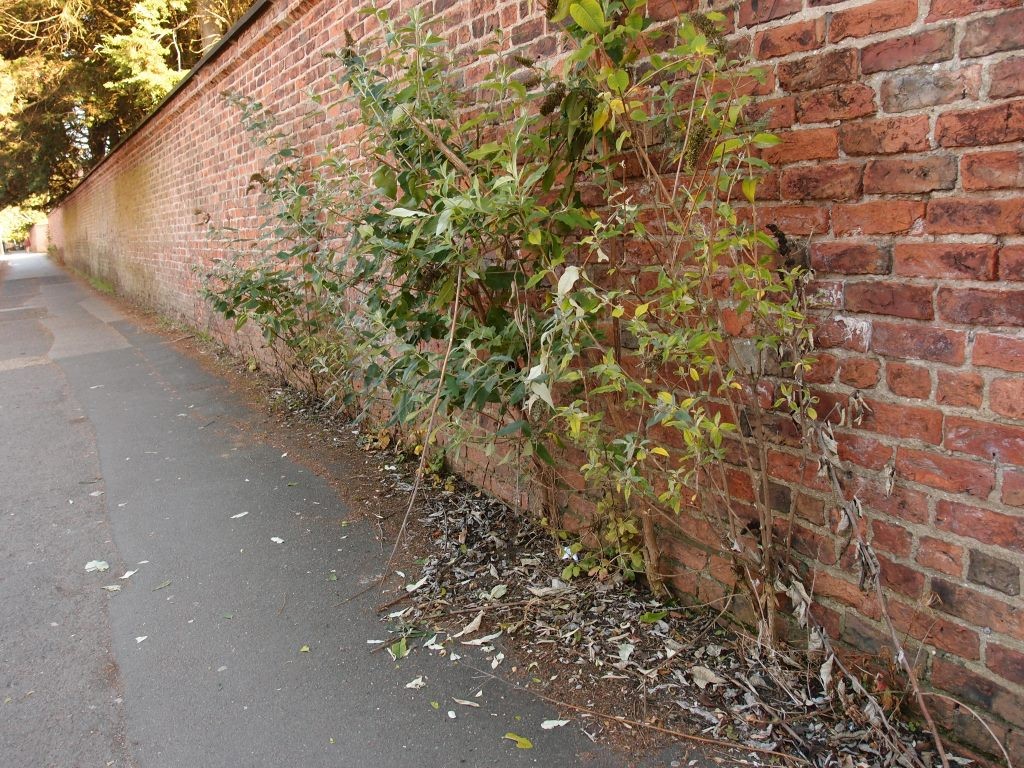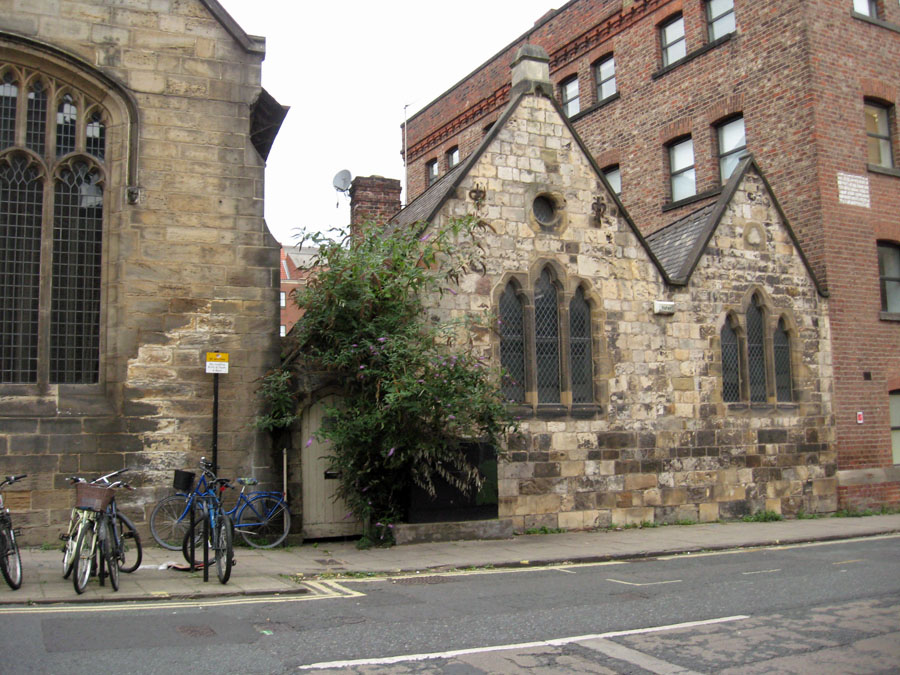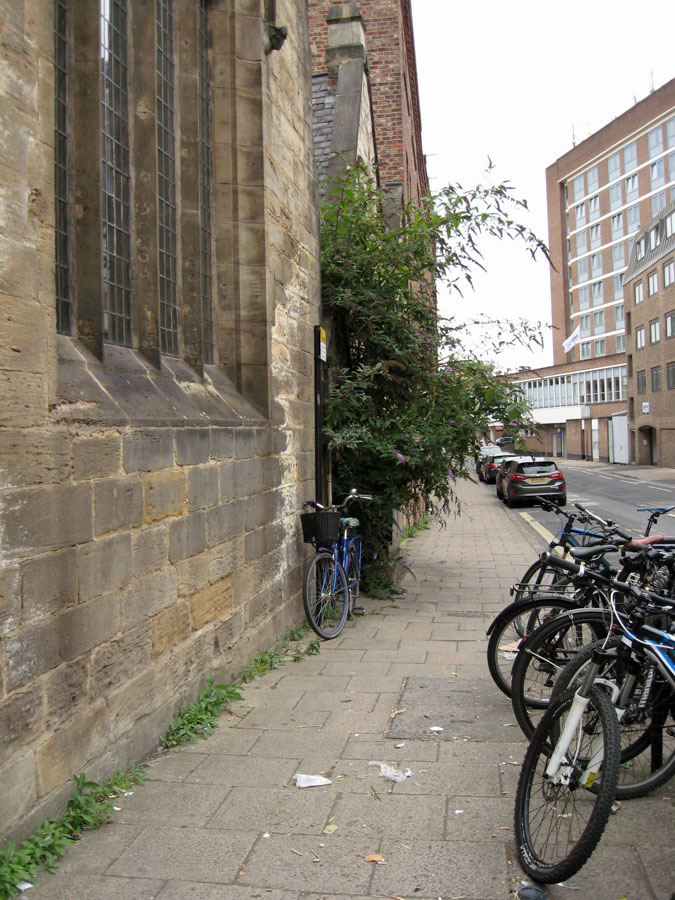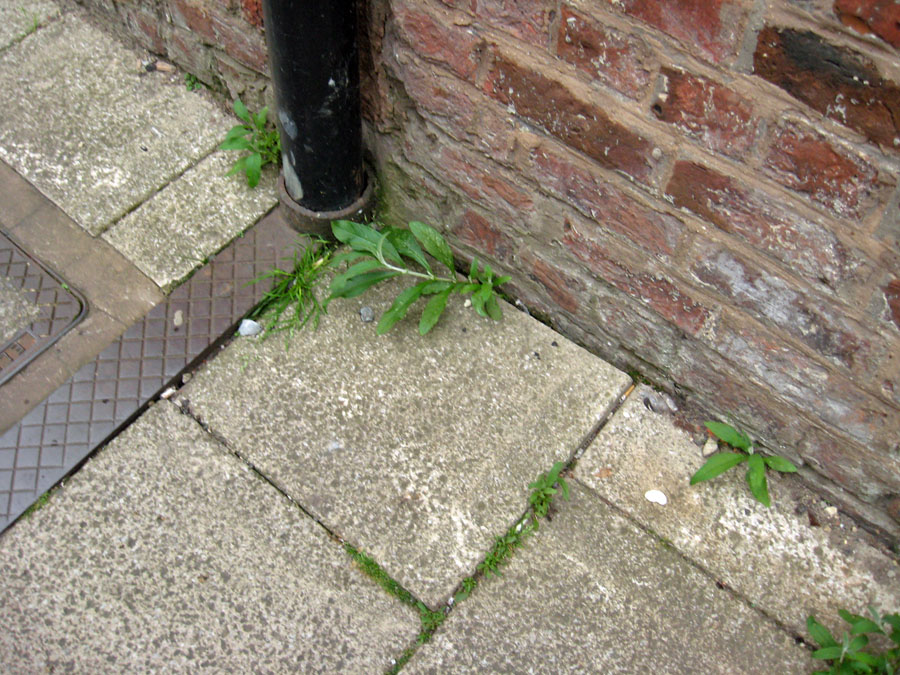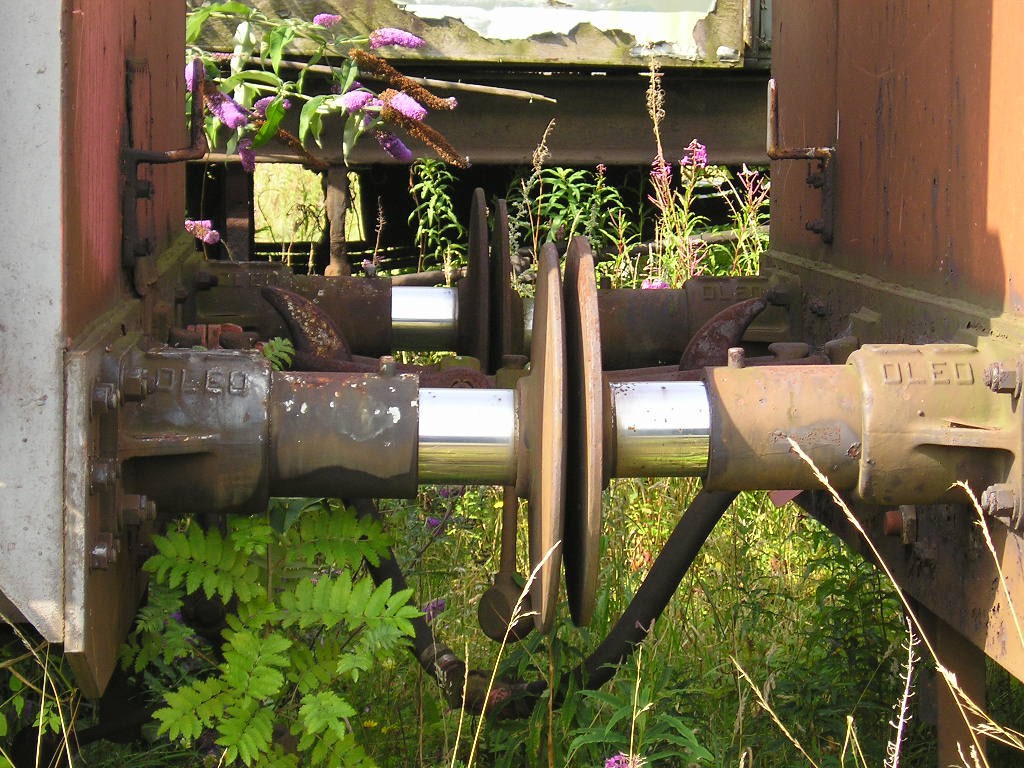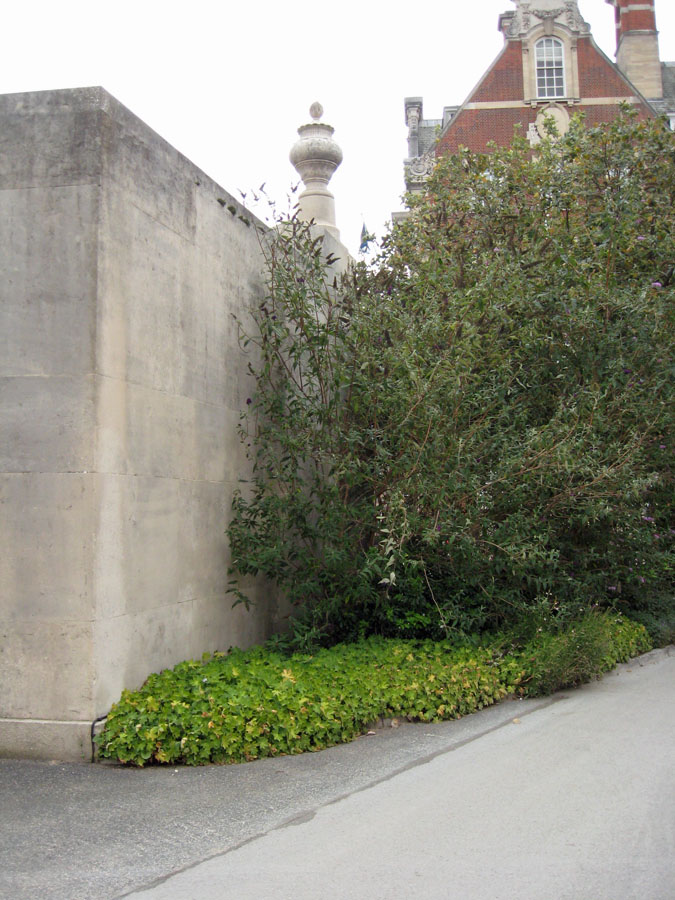Previously we were looking at an area of land where rare wildflowers grow, plants that have taken years to establish and need particular conditions in order to flourish.
Let’s stay with plants, but in this case the more common plants, the ones that arrive without introduction and quickly establish themselves in our built environment, flourishing anywhere without any encouragement — the plants seen as weeds.
Concerns have been expressed about out of control weed growth in various parts of York, particularly in areas outside the city centre. The problem has been discussed at a recent council meeting.
Initially it might look like the concerns are just about tidiness, and could be viewed as people making a fuss about nothing, particularly if it’s concerns about whether it looks bad to tourists. If it was just about tidiness and tourists I wouldn’t be writing about it.
I’d like us to adopt a more sophisticated, selective and perhaps proactive approach to the creeping greenery in our streets. Perhaps not rely so much on the council and its contractors to be wandering about spraying weedkilller, and thinking that spraying weedkiller is all that needs doing. If that’s what used to happen in the ‘old days’ then I don’t want the old days back. There are serious concerns about the effects of weedkillers. Though they might seem the most convenient way of getting rid of the green bits growing out of cracks in the pavement, we have more understanding now of some of the toxic effects of our supposedly convenient chemicals — or at least I hope we do.
Some of the problematic growth looks too well-established for weedkillers to solve the problem anyway.
Some plants seen as weeds can be removed simply by bending down and pulling them up, and that approach might be more sensible, rather than the weedkiller dousing. Others are far more tenacious, clearly firmly lodged in cracks in pavements and buildings, and have a woody base that is the product of more than one year’s growth. They can damage buildings, or branch out so far into footpaths and cycle paths that it’s difficult to get past them.
Buddleia — also sometimes spelt buddleja, and commonly known as ‘the butterfly bush’ — isn’t a small annual weed that you could pull up by hand. It’s a shrub, a vigorous thing, managing to produce a huge amount of growth even if its roots are growing in the poorest soil in the tiniest crevice. It has become very common in the local landscape.
Recently I noticed a particularly striking example on North Street, off Micklegate.
I’ve seen buddleia growing out of buildings before, quite a few times. Often small examples, on unoccupied buildings (like the old Reynard’s garage/Airspeed building), and often up at gutter or roof level (as on the Tuke House on Lawrence Street) where they’re hard to reach. This one was easily reachable, and so low down that it was obstructing half the pavement.
How did it get so big without anyone doing anything? Perhaps not the council’s job, or their contractors, as it’s growing out of a wall rather than the pavement, but it seems daft that it was just left there to grow so huge, blocking the pavement.
Images from Google Street View, from past years (2017 and 2018), show that it appeared just a few years ago, and make clear how much growth this plant puts on in a year. If only it had been pulled out of the crevice it had settled in, back when it was small.
And along the street next to it, its offspring from its many seeds were taking root in the crack between the pavement and neighbouring buildings.
That little buddleia and all its siblings presumably came from the seedheads of many years of growth from the big buddleia growing out of the wall a bit further down the street.
At the very least it should have been deadheaded of its seedheads every year after flowering.
I know the buddleia, ‘the butterfly bush’, has many admirers, and can be bought at garden centres, and many people like to have it in their gardens because of the butterflies that are apparently attracted to it, and so my apologies to anyone who is offended by my calling it a pernicious weed, but that’s what it has become.
Defra says the highly-dispersible seed of what was originally a garden plant has resulted in extensive buddleia populations in the wild, where the shrub has often out-competed native vegetation and reduced biodiversity.
Gardeners are being asked by Defra to remove seed heads after flowering to prevent its spread before it becomes “ubiquitous”.
Buddleia: The plant that dominates Britain’s railways (BBC, 15 July 2014)
That article dates from 2014, five years ago. I was struck by the word ‘ubiquitous’, as I remember using the phrase ‘ubiquitous buddleia’ in something written some years back. I assumed — as ubiquitous isn’t a word I use often — that I’d used it because of having read this article. But no, a quick search shows that I referred to ubiquitous buddleia in 2006, in a piece on the Hungate area. For many years I admired its exuberance on that ‘brownfield site’.
We were encouraged to tackle it in 2014 ‘before it becomes ubiquitous’ (though it already was), and here we are in 2019, where it’s growing profusely all over the place, including in the stonework of Ouse Bridge.
As I’ve mentioned before, and as illustrated at the top of this page, there’s another buddleia forest developing on Bridge Lane, near the hospital. It was tackled after I wrote about it, presumably by the council, but weedkiller spraying or hand pruning hasn’t removed it, and this year it’s back full of even more vigour, growing out of the bottom of the historic brick wall boundary at the back of Bootham Park Hospital. Quite well-established now, and perhaps impossible to remove. I’d be happy to pop along there with my secateurs and loppers, but then what do I do with the branches I cut off? I think I have to file that under ‘what we pay our council tax for’.
If you have your own rampant buddleia, or see one in the wild, it might be good to try to manage its growth in some way. Remove the flowers immediately after they fade, before they set seed. It’s advised that the shrub is pruned every year, in March, down to near the base. This way it provides flowers every year for the butterflies but doesn’t become a nuisance. But if it’s growing out of a crack in a wall or pavement then pruning it isn’t enough, it needs removing, preferably as soon as it appears as a small seedling.
City of York Council is recognising that weed growth is causing some problems, and it was discussed at a meeting recently, in early October. I haven’t had spare time to watch the webcast of the meeting, but perhaps one fairly straightforward action that could be taken, if it hasn’t been already, would be to reduce to manageable stumps the rampant buddleia bushes at the back of the council’s offices, West Offices. They were huge and full of seedheads forming when I was up there in late summer this year.
These were presumably put in as part of the original planting when the landscaping was done, when it became council offices. Perhaps it was assumed that this planted area would be looked after. It looks like it hasn’t been.
On the other side of the access road to the back of West Offices, and growing close to one side of the NER war memorial, is another buddleia, also massive. Perhaps not a good idea to let this get so well established, in such a sensitive location.
Perhaps the council’s new focus on weed control could start in its own backyard …
But perhaps we can all help by removing buddleia flowers as they fade, and pulling up any buddleia seedlings from the cracks where they’re settling and starting their infrastructure-damaging growth, and controlling the burgeoning buddleia before any more seeds are scattered to the winds.
. . . . .
Thank you for your virtual coffees in support of these pages. York Stories is a one-person, long-running, resident’s record of York and its changes, which is added to as often as I can.
Further information
Invasive shrubs, from rspb.org: ‘It has become increasingly clear that Buddleia davidii can be highly invasive. It produces lots of small, light seeds, which spread extremely easily. It can grow in many places, even in cracks in buildings several floors up.’ (Read more …)
From the Liverpool Echo: ‘This plant has invaded Tuebrook -and it’s spreading like wildfire – Once buddleia plant gets into walls, it can lead to them being pulled down’
CYC report (PDF) on the weed problems
Glyphosate weedkiller: Where is Glyphosate Banned? – ‘A number of cities, counties, states and countries throughout the world have taken steps to either restrict or ban glyphosate, the active ingredient in Monsanto’s Roundup weed killer.’





